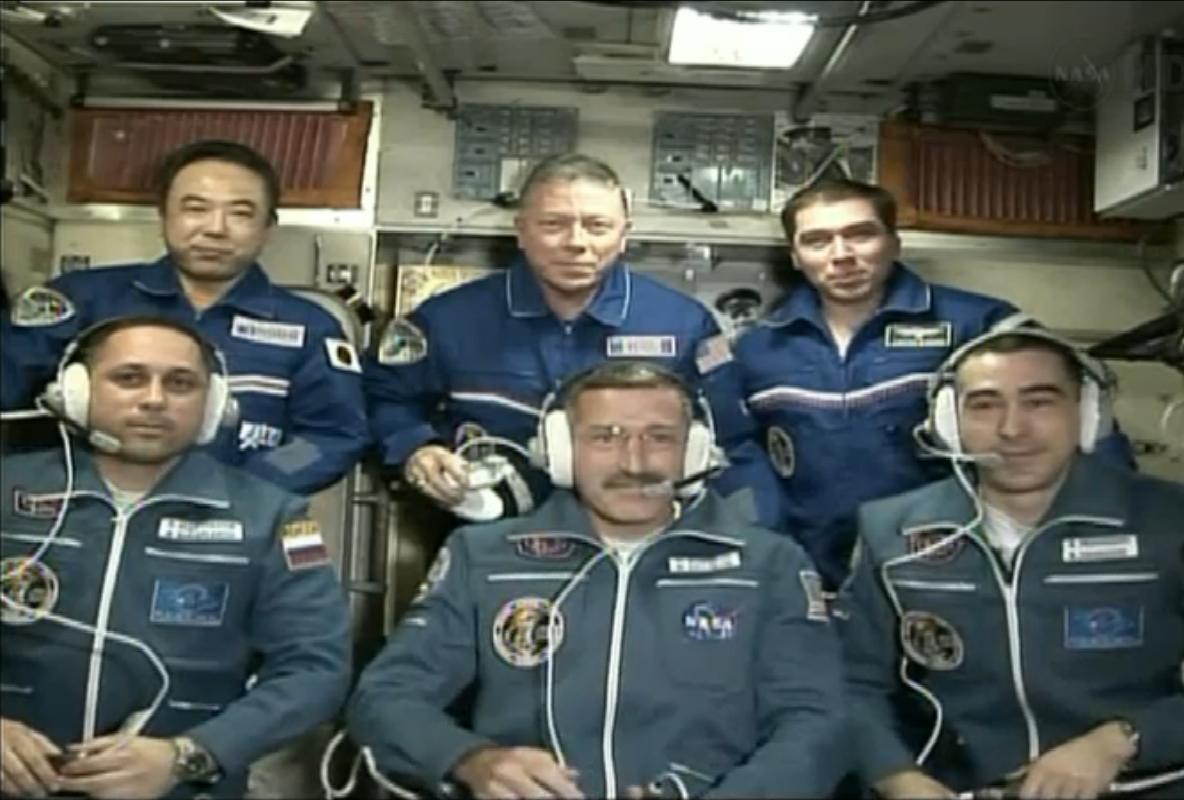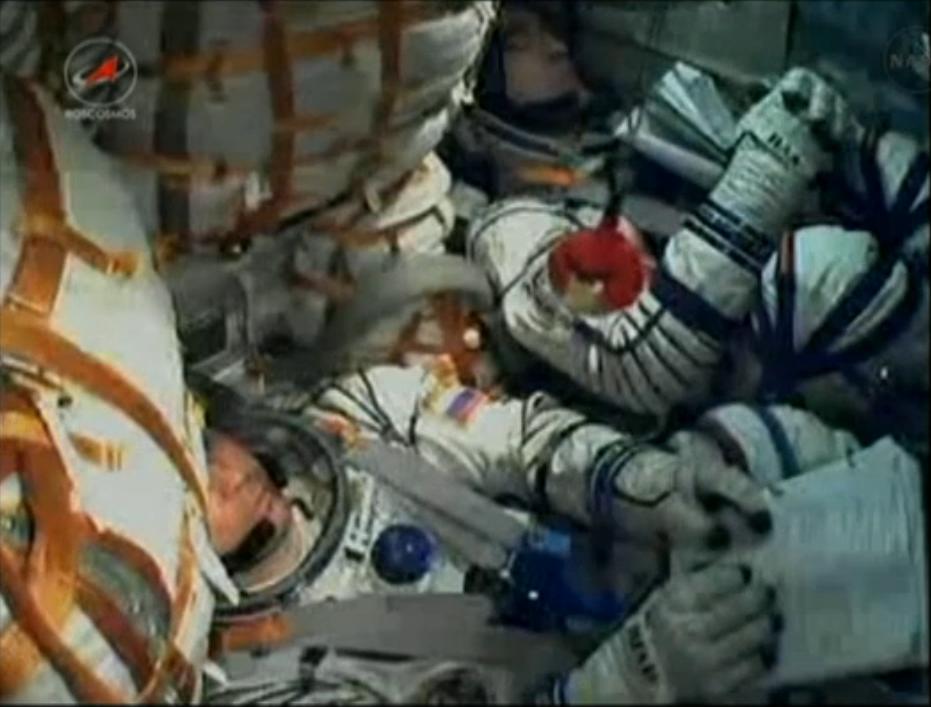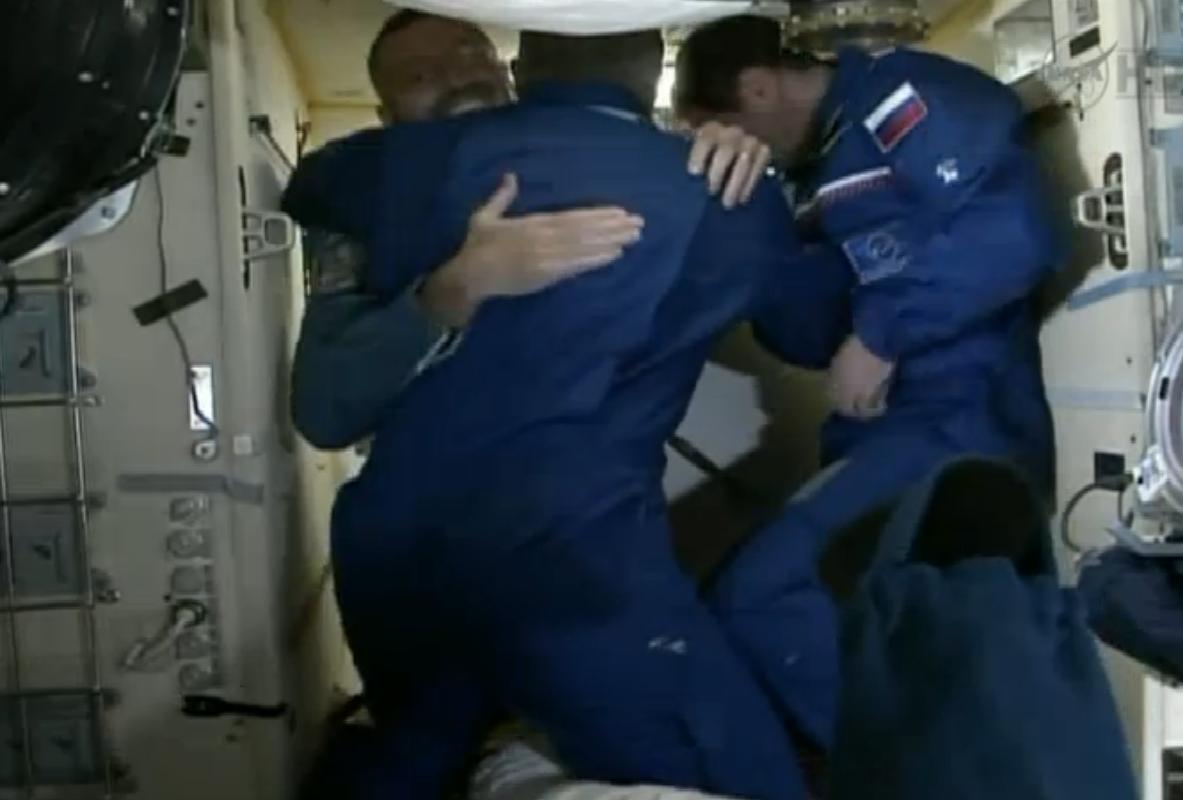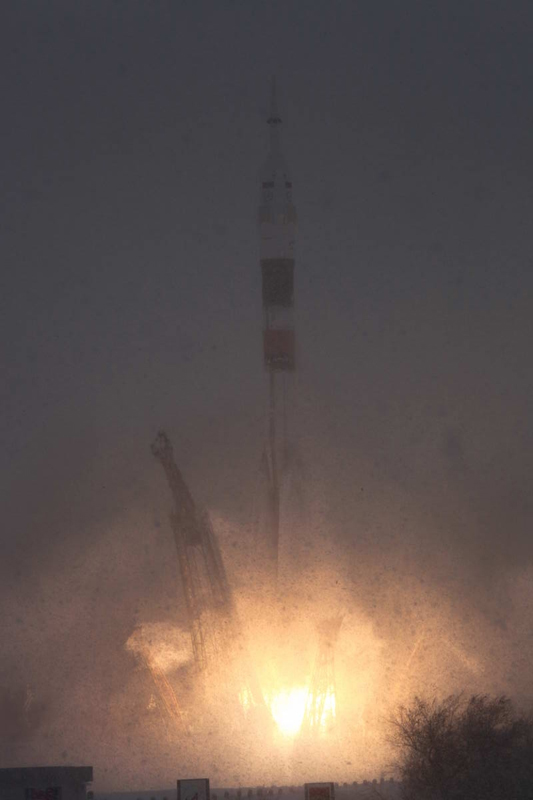New Crew Arrives at Space Station on Russian Spaceship

This story was updated at 3:15 a.m. EST.
A spacecraft carrying the three newest residents of the International Space Station safely arrived at the orbiting outpost today (Nov. 16), after a two-day space journey.
NASA astronaut Dan Burbank and Russian cosmonauts Anton Shkaplerov and Anatoly Ivanishin reached the space station early Wednesday, slightly ahead of schedule at 12:24 a.m. EST (0524 GMT). The trio parked their Russian-built Soyuz TMA-22 capsule at the Poisk mini research module on the station's Russian segment, as both spacecraft flew 248 miles (400 kilometers) above the South Pacific.
The crew conducted an extensive set of leak checks before they opened the hatch of their capsule and floated into the station. The hatches between the two spacecraft were opened at 2:39 a.m. EST (0839 GMT), according to NASA officials. The two crews greeted each other with laughter, hugs, and warm welcomes.
Burbank, Shkaplerov and Ivanishin then received congratulatory satellite calls from Russian dignitaries and family members before participating in a safety briefing led by the station's current commander, NASA astronaut Mike Fossum.

Two days earlier, the new station crew launched to the orbiting outpost with a plush, red toy bird from the video game "Angry Birds" inside their space capsule. The doll belonged to Shkaplerov's 5-year-old daughter, who expressed concerned about the welfare of her toy when she spoke to her father shortly after the hatch opening ceremony aboard the station.
"Your bird is with me," Shkaplerov told his daughter from orbit. "It made it safely to the station. The bird is doing very well. I'm going to take it to my sleeping crew quarters, and I'm going to stay with it, and I'm going to bring it back to you for sure."
Breaking space news, the latest updates on rocket launches, skywatching events and more!
"That's good," she replied. "I'm going to be concerned about my birdie."
Burbank, Shkaplerov and Ivanishin are the first crewmembers to launch to the space station since NASA retired its 30-year space shuttle program in July.
The spaceflyers will live and work aboard the orbiting laboratory for the next four months. During their stay, Burbank, Shkaplerov and Ivanishin will be involved in a variety of research scientific experiments, ranging from life sciences to Earth observation projects.

The arrival of the new crewmembers brings the population of the space station back up to its full capacity of six people, but not for long.
Fossum, Japanese astronaut Satoshi Furukawa and Russian cosmonaut Sergei Volkov have been living on the orbiting complex since early June, but the trio is scheduled to return home in their Soyuz TMA-02M capsule on Nov. 21.
Before leaving, Fossum, the current commander of the station, will hand over his post to Burbank, who will lead the station's Expedition 30 mission for the length of his stay. Fossum will spend this week helping Burbank get up to speed with the various science experiments and operations on the station.
"The crew will have a very busy time on orbit doing the handover, but the crew is prepared and ready to go do that, and then we're ready again for the landing that is coming up," Bill Gerstenmaier, associate administrator for NASA's human exploration and operations directorate, said in a post-docking news briefing from the Russian Federal Space Agency's Mission Control in Korolev, Russia.
Burbank has visited the space station twice before on flights aboard the space shuttle Atlantis. The veteran spaceflyer was a member of the STS-106 mission in 2000 and the STS-115 mission in 2006. This is his first long-duration stint aboard the orbiting complex.
Shkaplerov and Ivanishin are both making their spaceflight debuts. The three newest station residents will remain at the massive orbiting complex until March 2012.

Burbank, Shkaplerov and Ivanishin flawlessly launched into orbit on Sunday, Nov. 13 (Monday, Nov. 14 local time) in the midst of blizzard conditions at the Baikonour Cosmodrome in Kazakhstan.
The successful launch represented a critical milestone for the Russian Federal Space Agency and its Soyuz fleet of rockets. In August, a Soyuz booster that was carrying an unmanned cargo ship suffered a malfunction shortly after launch, and the rocket and Progress 44 cargo freighter crashed in Siberia.
Burbank, Shkaplerov and Ivanishin were originally scheduled to launch to the station in September, but as officials conducted an investigation into the cause of the crash, Russian spaceflight operations to the space station were temporarily halted. This is because similar Soyuz rocket designs are used to loft both unamnned cargo freighters and humans to the orbiting complex.
The malfunction was a rare accident for the typically reliable Soyuz boosters, but engineering analyses eventually traced the problem back to the gas generator in the rocket's third stage.
The first supply run to the orbiting complex since the August crash took place on Oct. 30, when a robotic Progress 45 cargo ship launched to the station carrying nearly three tons of supplies. The successful liftoff of Burbank, Shkaplerov and Ivanishin represented the first manned Soyuz launch since the August failure.
"The Russian team did a tremendous job of getting ready, getting the crew prepared, and making this launch and docking," Gerstenmaier said. "This was not easy, and the Russians did a tremendous job of getting prepared and making today possible."
You can follow SPACE.com staff writer Denise Chow on Twitter @denisechow. Follow SPACE.com for the latest in space science and exploration news on Twitter @Spacedotcom and on Facebook.
Join our Space Forums to keep talking space on the latest missions, night sky and more! And if you have a news tip, correction or comment, let us know at: community@space.com.

Denise Chow is a former Space.com staff writer who then worked as assistant managing editor at Live Science before moving to NBC News as a science reporter, where she focuses on general science and climate change. She spent two years with Space.com, writing about rocket launches and covering NASA's final three space shuttle missions, before joining the Live Science team in 2013. A Canadian transplant, Denise has a bachelor's degree from the University of Toronto, and a master's degree in journalism from New York University. At NBC News, Denise covers general science and climate change.
